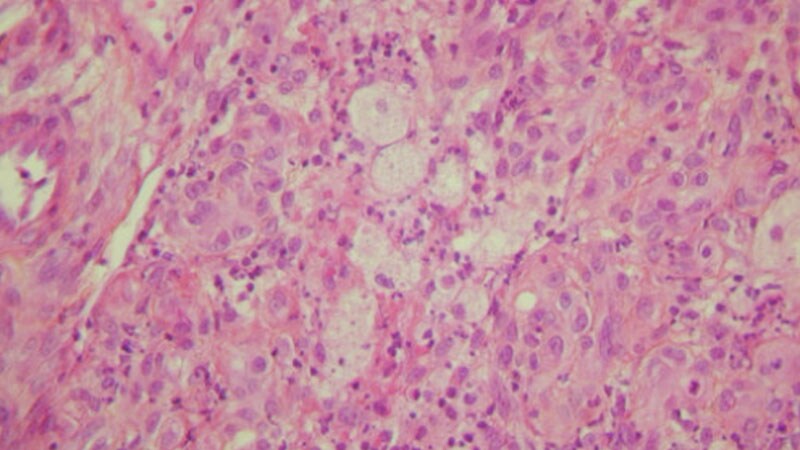핵심 개념
Achieving microbiological cure in Mycobacterium avium patients significantly boosts survival rates.
초록
Patients with nontuberculous mycobacterial pulmonary disease caused by Mycobacterium avium complex (MAC) showed improved survival rates when achieving microbiological cure at the end of treatment. The study, conducted by Joong-Yub Kim, MD, and colleagues, focused on the impact of microbiological cure on long-term survival in 382 adult patients with NTM-PD. Key findings include the association between microbiological cure and reduced mortality, highlighting the importance of successful treatment outcomes in NTM-PD patients.
요약 맞춤 설정
AI로 다시 쓰기
인용 생성
소스 번역
다른 언어로
마인드맵 생성
소스 콘텐츠 기반
소스 방문
www.medscape.com
Boosting Survival in Patients With Mycobacterium Avium
통계
Patients who achieved microbiological cure were significantly younger (63 years vs 68 years, P = .002) and had lower erythrocyte sedimentation rates (11.5 mm/h vs 23.5 mm/h, P < .001).
Those who achieved microbiological cure were less likely to use four or more drugs (8.5% vs 25.3%, P < .001) and had shorter treatment durations (18.4 months vs 22.3 months, P < .001).
Five-year survival rates were 89.4% for patients who achieved microbiological cure and 81.0% for those who did not.
인용구
"Given the importance of microbiological cure, patients who fail standard therapies should be included in ongoing clinical trials."
"The results highlight the importance of microbiological success at completion of treatment for NTM-PD patients."

더 깊은 질문
How can the findings of this study impact the current treatment guidelines for NTM-PD patients?
The findings of this study suggest that achieving microbiological cure at the end of treatment significantly improves survival in patients with Mycobacterium avium complex (MAC) nontuberculous mycobacterial pulmonary disease (NTM-PD). This highlights the importance of microbiological success as a treatment outcome in NTM-PD patients. These results could potentially influence current treatment guidelines by emphasizing the need to prioritize achieving microbiological cure as a key indicator of treatment success. Healthcare providers may consider adjusting treatment regimens to focus on achieving microbiological cure, potentially leading to better long-term outcomes for NTM-PD patients.
What are the potential drawbacks of focusing primarily on microbiological cure as a treatment outcome?
While focusing on microbiological cure as a treatment outcome for NTM-PD patients can be beneficial in improving survival rates, there are potential drawbacks to consider. One drawback is the challenge of antibiotic resistance, which can make achieving microbiological cure difficult in some cases. Additionally, solely focusing on microbiological cure may overlook other important clinical factors that contribute to patient outcomes, such as quality of life, symptom improvement, and overall well-being. Relying solely on microbiological cure as a treatment outcome may also lead to a narrow perspective on patient care and potentially neglect the holistic needs of the individual.
How can the concept of microbiological success be applied to other infectious diseases for improved patient outcomes?
The concept of microbiological success, as demonstrated in this study with NTM-PD patients, can be applied to other infectious diseases to improve patient outcomes. By prioritizing microbiological cure as a treatment outcome, healthcare providers can ensure that the infection is effectively eradicated, reducing the risk of recurrence and complications. This approach can lead to better long-term outcomes for patients with various infectious diseases, as it focuses on addressing the root cause of the infection. Implementing microbiological success as a treatment goal in other infectious diseases can help guide treatment decisions, monitor progress, and ultimately improve patient care and outcomes.
0
